Quick navigation:
- Introduction
- PhD dissertation
- Publications and lectures
- Invitation to the defence
- Presentation slides
- Laudatio and photos
Introduction

From September 2001 up and until June 2006, I worked as a PhD student at the Department of Electrical Engineering ESAT, at the Katholieke Universiteit Leuven, in the research division Systems, Models, and Control (SCD/SISTA/SMC, now grouped under STADIUS), headed by my promotor Bart De Moor (see also the Mathematics Genealogy Project).
My research dealt with transportation planning models and modelling traffic flows on motorways. I was furthermore concerned with the use of cellular automata to model traffic flows, and to simulate large-scale systems efficiently using distributed computing (within the context of integrated dynamic traffic assignment). I was also involved in the handling of large data sets, in particular traffic data stemming from single loop detectors.
In June 2006, this resulted in my PhD dissertation:
More information about my dissertation and the thesis defence can be found here; a list of my publications and presentations can be found here.
My PhD committee consisted of the following eight people:

|
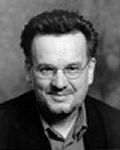
|

|

|
|||
|
Bart De Moor |
Ben Immers |
Bart De Schutter |
Joos Vandewalle |
|||
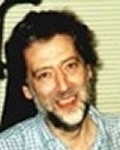
|
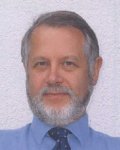
|
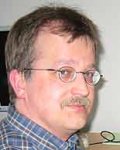
|
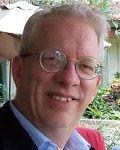
|
|||
|
Guy Campion |
André Barbé |
Andreas Schadschneider |
Paul Van Houtte |
PhD dissertation

Modelling Traffic on Motorways:
State-of-the-Art, Numerical Data Analysis, and Dynamic Traffic Assignment
Download dissertation text (PDF, 62.83 MiB)
With the levels of congestion in cities and countries showing an
ever-increasing trend, the modelling of road traffic continues to be a
highly active field. Whereas numerous efforts have been undertaken towards
the local and global control of traffic flows, our research is aimed at the
modelling part of road traffic, more specifically traffic on motorways.
The goal of this dissertation is three-fold; for starters, we provide a
complete nomenclature convention within traffic flow theory, built upon a
consistent set of notations. In continuation, we give an in-depth literature
survey on the mathematical models used for describing road traffic flows,
both from a transportation planning and a flow propagation point of view.
Special attention is given to the class of cellular automata models of road
traffic. Secondly, we perform an exploratory data analysis of raw traffic
flow measurements, discussing the operational characteristics of single-loop
detectors. This analysis also provides researchers with tools to track
statistical outliers, to quickly assess structural and incidental detector
failures, to estimate travel times in an off-line fashion based on raw
cumulative counts, and to obtain a visual representation of traffic flow
dynamics in time and space. Finally, we provide, within the context of
simulation-based dynamic traffic assignment, a straightforward method to
tackle both departure time choice and dynamic route choice problems in a
sequential manner, built around a traffic flow model that is represented as
a computationally efficient cellular automaton.
Our contributions to the field of literature are distinct, in that such
comprehensive overviews hitherto only existed in scattered form, whereas we
provide a synthesis of the approaches concerning the description of road
traffic flows. Furthermore, in contrast to most research on the numerical
analysis of traffic flow measurements, we offer methods that are capable of
dealing with large-scale data sets in order to get a global picture
regarding the quality of the measurements. Finally, as opposed to many
approaches towards the paradigm of simulation-based dynamic traffic
assignment, we propose a methodology that sequentially integrates departure
time choice with route choice within a simulation framework.
- Foreword / Abstract / Korte samenvatting / Table of contents
- Chapter 1 - Introduction
-
Part I - The Physics of Road Traffic and Transportation
- Chapter 2 - Traffic flow theory
- Chapter 3 - Transportation planning and traffic models
-
Part II - Cellular Automata Models of Road Traffic
- Chapter 4 - Traffic cellular automata
- Chapter 5 - Relating the dynamics of the STCA to the LWR model
-
Part III - Numerical Analysis of Traffic Data
- Chapter 6 - Data quality, travel time estimation, and reliability
-
Part IV - Integrated Dynamic Traffic Assignment
- Chapter 7 - Dynamic traffic assignment based on cellular automata
-
Part V - Conclusions and Perspectives
- Chapter 8 - General conclusions and future research
-
Appendices
- Appendix A - Glossary of terms
- Appendix B - TCA+ Java software
- Appendix C - Some thoughts on obtaining a PhD
- Appendix D - Nederlandse samenvatting
- References / List of publications / List of presentations / About the author
Invitation to the defence


There is also a PDF version of the invitation available.
Presentation slides

Here you can find the slides of my presentation (created using LaTeX's Beamer package).
Note that for the animations, an XviD-compatible codec is required.
- Presentation (PDF, 9.41 MiB)
- Animation #1; Urban Sprawl (AVI, 97 KiB)
- Animation #2; Game of Life (AVI, 4.73 MiB)
- Animation #3; TCA Road Animation (AVI, 2.93 MiB)

Laudatio and photos

After my presentation and the Q&A with the jury, there was the proclamation given by the head of the jury, followed by a speech in my honour (i.e., the laudatio) given by my promotor. After that, I spoke some words before sending everyone off to the reception.
The photos of the presentation, defence, proclamation, laudatio, and the reception can be found here, in the Photo galleries-section of this website.



